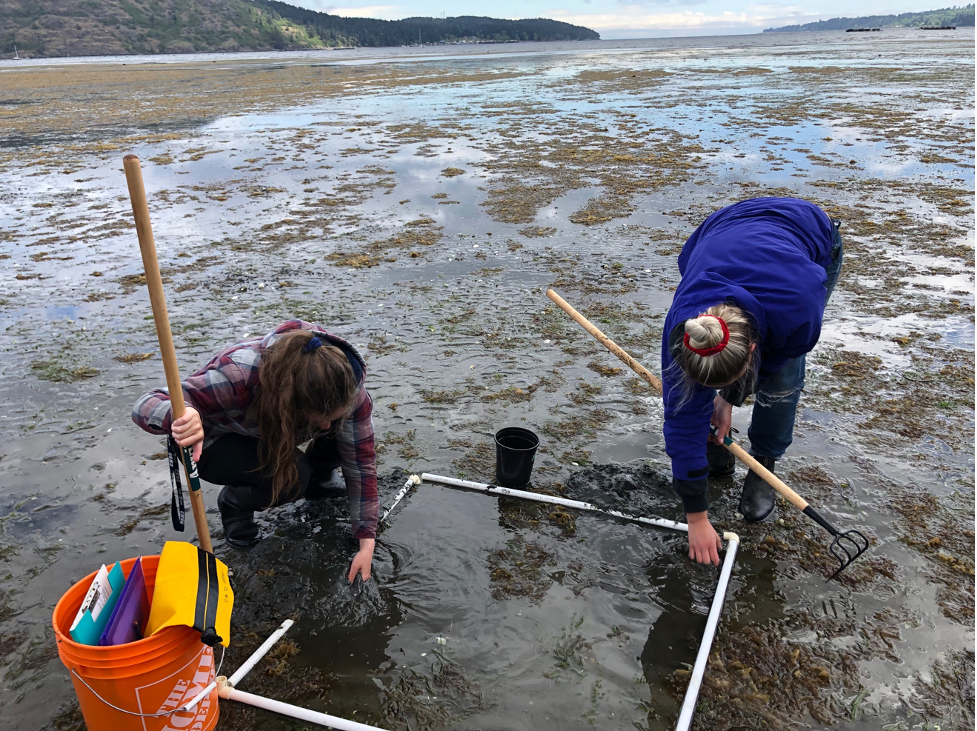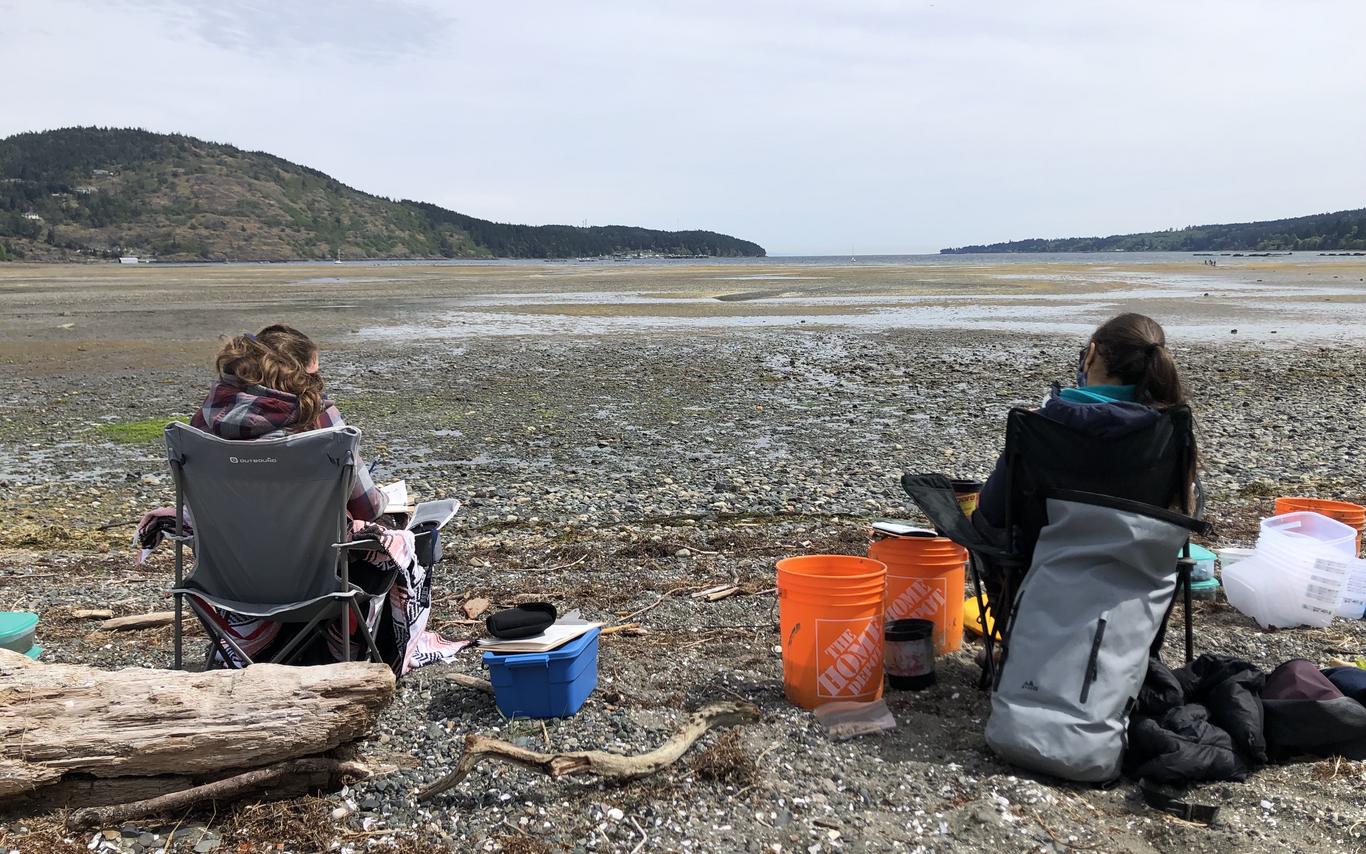This summer I have the incredible opportunity of being a Research Assistant (RA) on the Nanoose Bay Recreational Shellfish Reserve Harvest Monitoring project. This project has been intriguing to work on so far and has really opened my eyes to an issue I had no idea existed. Before this project I never paid much attention to clams, but as I have spent more and more time out in Nanoose Bay, I have learned a lot about the importance of sustainability when harvesting clams. My objective as a research assistant is to monitor the approximate number of clams being taken from the public use area in Nanoose Bay so that with our data we can provide recommendations that will lead to more sustainable clam harvesting practices.
At the beginning of the summer a group of research assistants and I were invited out to Nanoose Bay to learn more about clam harvesting and what generally goes on in the summer. Chris, a member of the Snaw-Naw-As (Nanoose) First Nation, gave us an incredible introduction to the world of clam harvesting. He started out by explaining the history of the land and how important clam harvesting has been for decades. He also explained how to harvest clams and that there are regulations on how many you can take. We spent several hours out on the beach with the sun shining, asking questions, and tapping into Chris’ knowledge. One of the biggest eye openers from that day was the lack of legal sized clams in the recreational area. The other research assistants and I dug all over and only a few of us found clams that would be legal harvesting size. At the end of the day, it felt great to take off my rubber boots and I was left with an interesting tan line thanks to my mask.
A week later, us RA’s met up with some of the MABRRI team to participate in the first clam abundance survey of the year. The clam abundance survey aimed to identify the number of clams that can be found in the public use area before the peak harvesting season. The ten members divided into pairs and started trekking out into the massive area of beach. I was partnered with Alanna, who is the Environmental Project Coordinator at MABRRI. Alanna was such a great partner to have for this study and I thoroughly enjoyed getting to know her. At the end of the first day, we realized that we had not covered enough area for the study, so we decided to come back the following day. The next day it was back to work, and I think for most of the duos there was a determination to work fast and efficiently. After hours of digging, it was time to measure the clams that we had found which was a little tedious. Bucket after bucket we finally finished the measuring for the day, and it was time to return the clams back to their original location. This day was a lot of hard work, but there were so many enjoyable parts such as, getting to see a sea otter up close, working alongside the MABRRI team, soaking up the sun, and getting an intense workout in after carrying buckets of clams up and down the beach.
For the rest of the summer MABRRI’s presence at Nanoose Bay will mainly be on the clam harvesting project. I explained a little bit about the project above, but I will walk you through what we do on a typical day. When I arrive at the beach I grab some lunch, a water bottle, and of course a nice lawn chair. I am usually greeted by Amanda or Rebecca, two of MABRRI’s other research assistants, who are there and have brought the data sheet and some binoculars. The data we collect includes number of people harvesting, the size of container they have, approximately how full that container is, and the length of time they are out harvesting. We now get to enjoy the incredible nature and scenery that is right in front of our eyes. The days that I have been out there have been either on the verge of rain or super windy so not many people are out harvesting, but there are a few people who have a tremendous amount of determination to harvest some clams. Locals who are clam harvesting are generally very nice and will say “hi” or ask, “what are you doing?”. It always makes my day when they want to talk to us. Throughout the shift we will pull out the binoculars and see if people are on one of the further beaches and then one of us will drive down the highway to count the vehicles occupying the other beach. At the end of the day, we pack everything up and make a conscious effort to not leave anything behind. Every time I get a chance to go clam harvest monitoring it’s always a little bit different from the last which makes it a fun and exciting experience.

